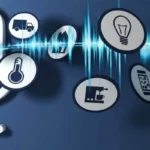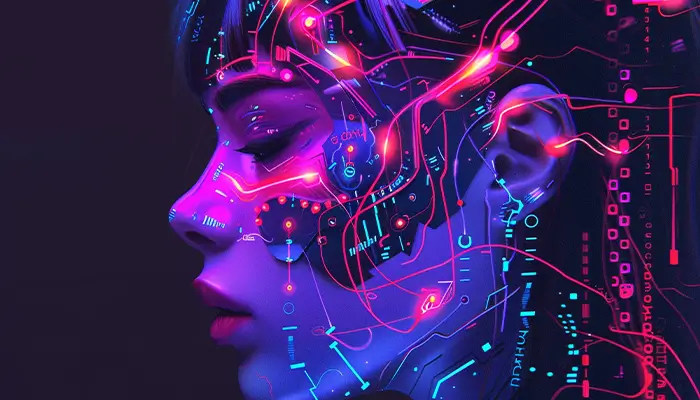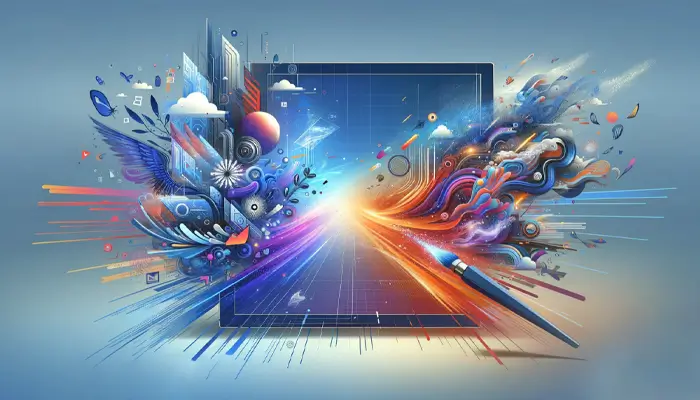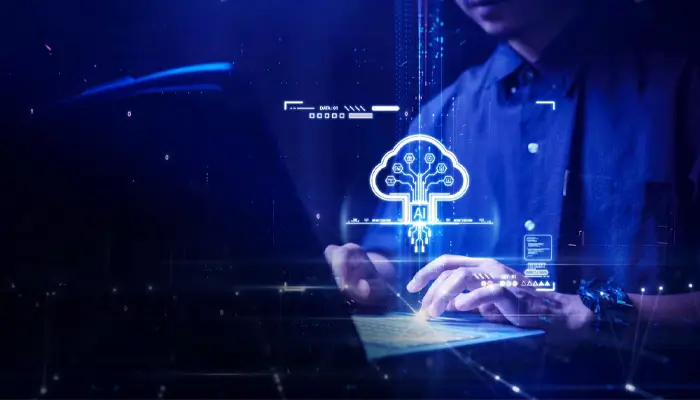
Beyond Automation: How AI Is Enabling Emotionally Intelligent Branding in 2025
November 5, 2025
Voice-Driven Design: How AI Assistants Are Changing the Way Creatives Work
November 10, 2025Why designers and marketers are now working hand-in-hand with Artificial Intelligence, not against it.
In the ever-evolving world of digital design, one truth stands out in 2025: AI is no longer just a tool; it’s a collaborator.
From brainstorming and layout suggestions to writing copy and choosing color palettes, AI co-design systems like Adobe Firefly, Figma AI and Canva Magic Studio are reshaping the creative process.
These tools don’t replace designers, they work with them, helping teams move from concept to completion faster, smarter and more collaboratively than ever before.
-
From Assistant to Creative Partner
Early AI tools focused on automation, resizing images, generating variations or speeding up repetitive tasks.
Today’s co-design tools go a step further: they understand creative context.
Platforms like Adobe Firefly and Canva Magic Studio interpret project goals, analyze style guides and offer intelligent, design-conscious suggestions.
Example:
When you start designing a landing page, AI can now recommend layout structures, font pairings and even CTA placement, adapting in real time as you make edits.
This level of interaction transforms AI from a silent helper into a true design collaborator that learns your preferences and evolves with your workflow.

-
Figma AI: Real-Time Collaboration Gets Smarter
Figma AI, introduced at Config 2025, is one of the clearest examples of AI-powered teamwork.
It enhances traditional collaboration by:
- Auto-generating wireframes from text prompts.
- Suggesting color schemes that align with accessibility and brand identity.
- Spotting design inconsistencies across pages or components.
- Writing placeholder copy that fits tone and structure.
Designers can simply type: “Create a minimalist app dashboard with a dark theme and modern typography” and Figma AI delivers a working prototype within seconds.
Stat Insight: According to Figma’s internal study, AI-assisted design teams complete projects 43% faster while maintaining higher consistency across deliverables.
-
Adobe Firefly: Creativity Meets Context
Adobe Firefly, now integrated across Creative Cloud, takes co-design to another level by understanding creative intent.
Designers can generate visuals, textures and typography using natural language commands, “Design a futuristic tech ad banner with neon accents” and Firefly instantly produces editable layers that blend with existing assets.
It even uses Generative Fill to enhance compositions intelligently while respecting composition rules, contrast balance and brand colors.
Pro Tip: Firefly also analyzes previous project styles, meaning it “learns” your creative DNA and adapts its output to match your tone and audience.
-
Canva Magic Studio: Simplifying Collaboration for Non-Designers
For marketing teams and small agencies, Canva Magic Studio bridges the gap between design expertise and everyday collaboration.
Its Magic Write and Magic Design features allow users to:
- Generate branded templates instantly.
- Write captions, taglines or ad copy using tone-aware AI.
- Adjust visual hierarchy and spacing automatically for readability.
This empowers non-designers (like social media managers or entrepreneurs) to contribute meaningfully to creative workflows, democratizing design while maintaining brand consistency.
Example: A marketing team can now build an entire campaign, from visuals to ad copy, collaboratively with AI in under an hour.
-
The Human-AI Workflow: A New Creative Synergy
In 2025, the most innovative studios and freelancers treat AI as part of the creative team.
Designers focus on vision and storytelling, while AI handles execution and optimization.
The workflow looks like this:
- Human: Defines the brand direction and creative brief.
- AI: Generates mockups, layout options and design suggestions.
- Human: Curates, refines and adds emotional or narrative depth.
- AI: Finalizes adjustments and ensures accessibility, alignment and SEO consistency.
Insight: According to Adobe’s 2025 Creative Trends Report, over 70% of creative professionals now use AI as part of their daily workflow, not to replace creativity, but to enhance it.
-
Ethics and Originality: Keeping Creativity Authentic
While AI can accelerate design, it raises concerns about originality and authorship.
Responsible use means ensuring:
- Transparent disclosure when AI is used.
- Avoiding unlicensed data in training sets.
- Maintaining a human final review to preserve authenticity and emotional value.
As AI grows more capable, ethical design leadership will define the difference between mass production and meaningful creation.
Conclusion
AI has officially graduated from being a background assistant to becoming a creative collaborator.
Tools like Figma AI, Adobe Firefly and Canva Magic Studio empower designers to think bigger, iterate faster and collaborate more seamlessly across teams.
The secret to success in 2025 isn’t resisting AI, it’s learning to co-create with it.
Because when human imagination meets artificial intelligence, design stops being just a process and becomes an evolving partnership.
If you have any questions regarding “AI Co-Design Tools” feel free to contact us. For inquiries and consultations, call us at: +92 321 4808303 or Email us at: hello@owaisgilani.com.
Disclaimer: The information shared on this website is for educational and informational purposes only and reflects my personal views and experiences. While I strive to provide accurate and helpful content, readers should use their own judgment and consult with a qualified professional before making any decisions based on the information here. I am not responsible for any actions taken based on this content. Feel free to reach out to me if you need clarification or have questions before using any part of this information.



